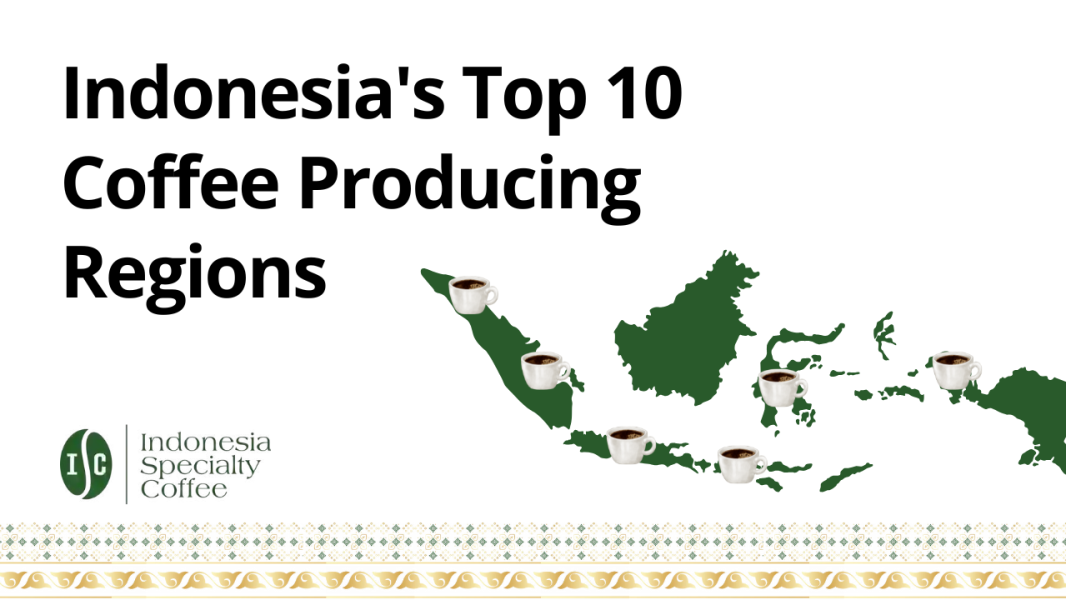Indonesia Coffee Production 2023
In 2023, Indonesia produced 758,730 Tons of Coffee. The country’s coffee production was heavily concentrated in just a handful of regions, with ten provinces shaping the majority of the national output.
Among them, Sumatra takes the lead, home to six of the top ten producing provinces. South Sumatra alone contributed over a quarter of Indonesia’s total production, showing just how dominant this island is in the country’s coffee landscape.
This combination of scale and diversity makes Indonesia not only a global supplier of volume-driven Robusta but also a rising origin for specialty Arabica, from Aceh’s Gayo highlands to the volcanic soils of Flores.
The Big Ten: Indonesia’s Top Coffee Producing Regions
Since official data for 2024 and 2025 have not yet been released, the latest available figures are from Badan Pusat Statistik (BPS) 2023. These numbers provide the most reliable snapshot of Indonesia’s coffee production landscape.
| Rank | Province | Production (Thousand Tons) | Note |
|---|---|---|---|
| 1 | South Sumatra | 198.0 | Primarily Robusta, smaller in scale, but growing recognition. |
| 2 | Lampung | 108.1 | Another Robusta stronghold, known for large-scale production and export. |
| 3 | North Sumatra | 87.9 | A key Arabica region, famous for Mandailing and Lintong varieties. |
| 4 | Aceh | 75.3 | Home of Gayo Arabica, one of Indonesia’s most renowned specialty coffees. |
| 5 | Bengkulu | 60.1 | Primarily Robusta, smaller in scale, but growing recognition. |
| 6 | East Java | 45.8 | Known for both Robusta (lowlands) and Arabica (Ijen Plateau). |
| 7 | South Sulawesi | 29.4 | Arabica origin, especially Toraja, is celebrated for its distinctive profiles. |
| 8 | Central Java | 26.9 | Produces both Robusta and Arabica; smaller but historically significant. |
| 9 | East Nusa Tenggara (NTT) | 26.6 | Famous for Flores Arabica, grown in volcanic highlands. |
| 10 | Jambi | 19.5 | Emerging Robusta producer, contributing steadily to Sumatra’s dominance. |
Together, these ten provinces form the backbone of Indonesia’s coffee industry total of 758,730 tons of coffee, with Sumatra accounting for the majority share, while Java, Sulawesi, and NTT bring unique regional flavors that enrich Indonesia’s coffee identity.
Robusta vs. Arabica Indonesia Coffee Production
Indonesia’s coffee story is shaped by the balance between high-volume Robusta and high-value Arabica. While Robusta accounts for about 70–75% of national production, Arabica makes up the remaining 25–30%, often commanding higher prices in specialty markets.
- Robusta. The top-producing provinces – South Sumatra, Lampung, Bengkulu, and Jambi are dominated by Robusta. These regions supply much of Indonesia’s export volume, fueling demand from instant coffee and large-scale roasters worldwide.
- Arabica. On the other hand, Aceh (Gayo), North Sumatra (Lintong & Mandailing), East Java (Ijen Plateau), South Sulawesi (Toraja), and Flores in NTT are celebrated Arabica origins. Each offers unique flavor profiles shaped by altitude, soil, and local processing traditions, making them sought-after in the specialty coffee scene.
This duality is Indonesia’s strength: the country can meet both global demand for volume and the growing appetite for distinctive specialty coffees.
Beyond the Numbers: Global Trends and Local Opportunities
The global coffee market is shifting. While Robusta remains essential for blends and instant coffee, demand for specialty Arabica is rising steadily, driven by consumers seeking traceability, sustainability, and unique flavor experiences.
For Indonesia, this presents a dual opportunity:
- Maintain its position as one of the world’s top Robusta suppliers, ensuring stability in high-volume markets.
- Elevate Arabica origins like Gayo, Mandailing, Toraja, Java Ijen, and Flores to strengthen Indonesia’s reputation in the specialty segment.
At the same time, growing attention to sustainability, farmer welfare, and post-harvest innovation opens pathways for Indonesian producers to increase value beyond raw beans. Buyers and enthusiasts alike are encouraged to look deeper into these regions, where tradition meets innovation, and where each cup tells a story of place.
Are you looking for Indonesian Coffee? Contact us now and get a quote!

